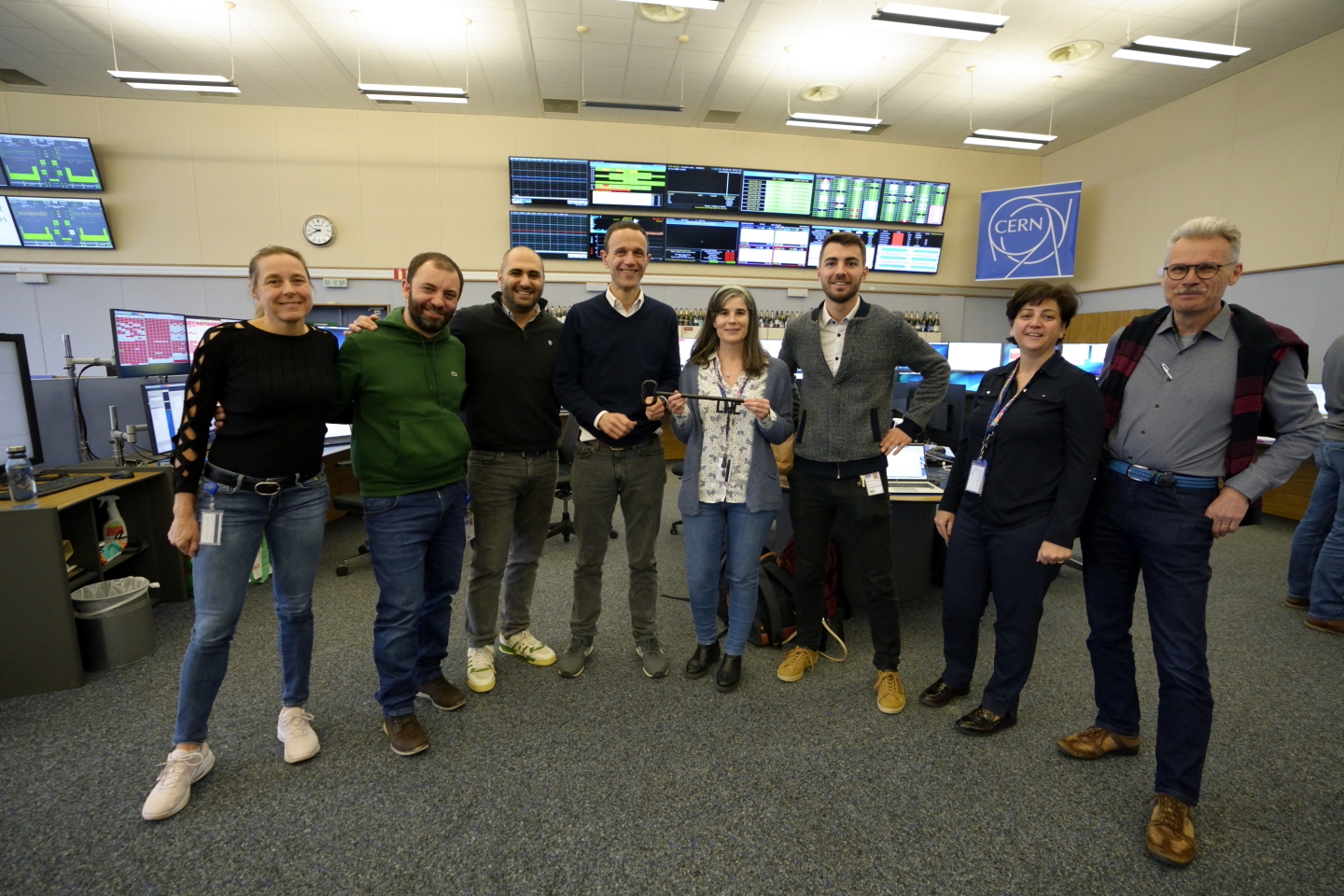As winter bids farewell, the recommissioning of CERN’s accelerator complex gathers pace, with the scientific community eagerly awaiting particle beams in their experiments. Following the traditional winter break (called the “year-end technical stop” (YETS)), the Linear accelerator 4 (Linac4) is the first machine to resume beam operation, followed by the downstream machines: the Proton Synchrotron Booster (PSB), Proton Synchrotron (PS), Super Proton Synchrotron (SPS) and Large Hadron Collider (LHC).
Beam entered Linac4 on 5 February, and the PS Booster a few days later. This week, the first beam was injected into the PS, which is now preparing the first beam for the SPS beam commissioning, scheduled to start on 1 March. The first particle beams will reach the LHC on 11 March.
The expectations for 2024 are high. In the LHC, the focus is on luminosity production with proton–proton collisions. The luminosity is an important indicator of the performance of an accelerator: it is proportional to the number of collisions that occur in the experiments in a given amount of time. The higher the luminosity, the more data the experiments can gather to allow them to observe rare processes.
The 2024 LHC run will conclude with lead–lead ion collisions; the first lead ions will be injected into the LHC on 6 October. The 2024 run is scheduled to end on 28 October.
The resumption of operation of the accelerator complex heralds a new year of physics, surely leading to important physics results. As the countdown to 11 March continues, the operations and other expert teams are working diligently to prepare the machines and the beams for another successful physics run.

